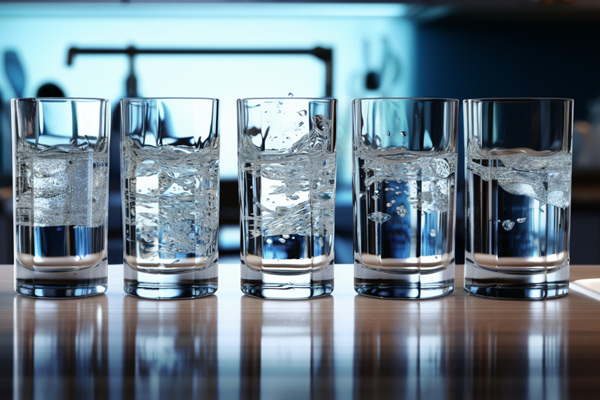
Water filters utilize various mechanisms and materials to remove impurities and contaminants from water. The specific operation of a water filter depends on its design and the contaminants it’s intended to remove. Here’s an overview of how common types of water filters work:
-
Mechanical Filtration (Sediment Filters):
- Uses a physical barrier, such as a mesh, foam, or fiber, to filter out larger particles.
- Works similarly to a sieve, catching larger contaminants while letting water pass through.
-
Activated Carbon Filters:
- Made from carbon that’s been treated to have a vast surface area, making it highly porous.
- Contaminants are attracted and bound to the carbon particles through a process called adsorption.
- Effectively removes organic compounds, chlorine, and improves taste and odor.
-
Reverse Osmosis (RO) Systems:
- Uses a semipermeable membrane to separate water from contaminants.
- Water is forced under pressure through the membrane, leaving contaminants behind.
- Removes a wide range of contaminants, including salts, minerals, metals, and some microorganisms.
-
Distillation:
- Water is boiled to produce steam.
- The steam rises, leaving contaminants behind, and is then condensed back into liquid form in a separate chamber.
- This process effectively removes many contaminants but might not remove volatile organic compounds that boil at temperatures lower than or close to water.
-
Ion Exchange:
- Uses resin beads charged with ions (either positive or negative).
- As water passes through the resin, unwanted ions in the water are swapped for ions on the resin, hence “ion exchange”.
- Commonly used to soften hard water by exchanging calcium and magnesium ions for sodium ions.
-
Ultraviolet (UV) Systems:
- Uses UV light to kill or inactivate microorganisms.
- The UV radiation disrupts the DNA of bacteria, viruses, and other pathogens, rendering them harmless.
- Effective against biological contaminants but doesn’t remove chemical contaminants.
-
Ceramic Filters:
- Made from diatomaceous earth or other ceramic materials.
- The small pores of the ceramic material trap bacteria, sediments, and other contaminants.
- Often combined with activated carbon to improve filtration.
-
Alum and Ferric Salts:
- Used in many municipal water treatment plants.
- When added to water, they cause tiny particles to clump together into larger particles that can then be filtered out or settle to the bottom.
It’s important to note that no single filtration method is perfect for all contaminants. That’s why many water purification systems combine multiple methods to achieve comprehensive water treatment. For example, a multi-stage system might use sediment filtration, activated carbon, reverse osmosis, and UV treatment all in one unit.

Home & Office Water Coolers
Vertex PWC-1000 Low Cost Hot & Cold Bottle-less Water Cooler
Home & Office Water Coolers
Vertex PWC-600 Deluxe 3-Temp Countertop Water Cooler
Parts
GoldLine 5 Stage Replacement Reverse Osmosis Filters
$99.10Original price was: $99.10.$86.24Current price is: $86.24.Home & Office Water Coolers
Vertex PWC-9500 Most Advanced Bottleless Hot and Cold Water Cooler
Home & Office Water Coolers
Vertex PWC-500 2-Temp Hot & Cold Countertop Water Cooler